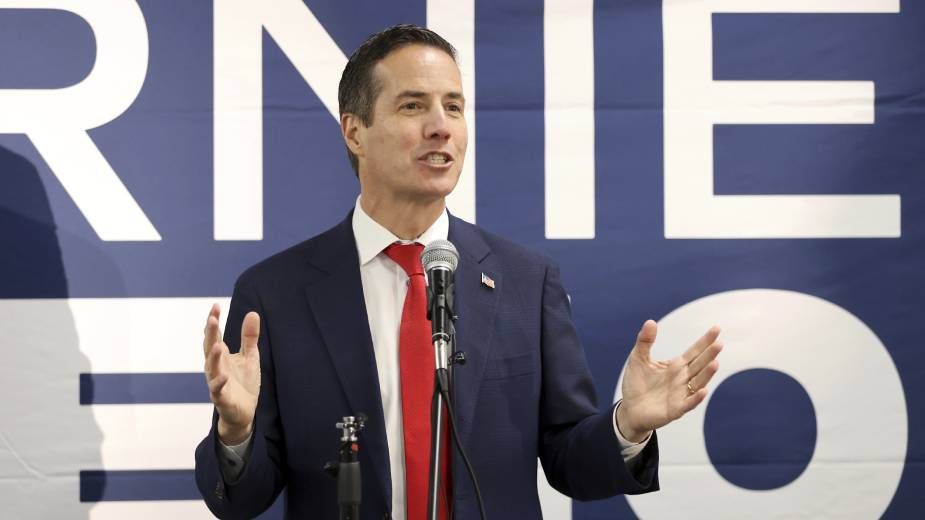Ohio by the Numbers: Where the State Is Falling Behind
Editor’s Note: This is second part of a story from Your Voice Ohio, a coalition of news organizations that engages Ohioans in conversations on important topics. The first part, published Saturday, can be viewed here.
By Doug Oplinger, Your Voice Ohio
What people said they would like to change about Ohio shows up in data as areas where the state is falling behind. What Ohioans said, after discussing what might work for the most people, was that communities need:
- Mental health services .
- Jobs with livable wages.
- Affordable housing.
- Access to healthy food .
- Access to affordable, quality education.
- Safe neighborhoods.
- Affordable, quality health care.
- Human dignity.
Your Voice Ohio hired former Akron Beacon Journal investigative and data reporter David Knox to generate data on all 88 Ohio counties going back several decades so that reporters can explore the state and communities in context.
Here are numbers he provided, and information as noted from other sources, on key topics:
Income Losses
One of the most stark illustrations of Ohio’s difficulties can be found in the median household income. Median represents the midpoint between highest and lowest. From 2000 to the most recent year for which data are available. most of Ohio, and Black Ohioans in particular, suffered extraordinarily even before the pandemic.
Median household income, 2000-2018, adjusted for inflation:
- U.S Whites, non-Hispanic, $69,168 in 2018, down $663.
- U.S. Blacks $42,263 in 2018, down $3,026.
- Ohio Whites, non-Hispanic, $62,162 in 2018, down $3,870.
- Ohio Blacks $34,199 in 2018, down $5,375.
The numbers show that Black Ohioans not only have median household incomes that are far lower than the U.S. and white households, they also lost more dollars.
Some highly populated counties have endured extraordinary economic declines since 2000, accompanied by some of the nation’s worst opioid overdose death rates. Those counties, and the decline in annual median household income from 2000, are:
- Montgomery (Dayton) down $9,900.
- Butler (Middletown-Hamilton) down $11,800.
- Lucas (Toledo), down $10,100.
- Trumbull (Warren), down $11,700.
Over just three years, median households lost the equivalent of a new car or a three-day hospital stay.
Median household income in Columbiana County fell from $51,745 to $43,745, a 15.5% drop. In Mahoning County, median household income fell 10% during the period, from $53,290 to $47,962.
Only seven of Ohio’s 88 counties have experienced an increase in median household income — most of them small and rural: Holmes, Belmont, Lawrence, Meigs, Harrison, Union and Delaware.
Jobs
Because of efforts to slow the coronavirus pandemic, about one in seven Ohioans is unemployed — that’s more than 750,000 people out of work — far worse than the Great Recession of 2007-09.
Ohio’s peak year for employment was in 2000 when 5.5 million were working. That number fell during two recessions and never recovered. In 2019, 5.4 million were working — down about 100,000 from the peak — although the population had increased 335,000. In May, the number of workers was an estimated 4.8 million.
Employment in Mahoning County peaked in 1999, when 113,389 were working. Trumbull County’s employment peaked two years earlier, with 99,265 working. In Columbiana County, unemployment peaked in 2000, when 34,812 were working.
In May, the most recent month for which numbers are available, 84,600 people were working in Mahoning County, 70,900 in Trumbull County and 40,200 in Columbiana County.
Mental Health
As Ohio’s job market began significant deterioration due to automation in 2005, there was growth in deaths due to drug overdoses — considered a mental health issue. More than 28,000 Ohioans have died of opioid overdoses alone in the past decade.
Suicide in Ohio is on the rise and 37 of 88 counties have rates above U.S. average, according to a recent Ohio University study. Moreover, unemployment is associated with depression, and Ohio’s unemployment rate is at one of the highest rates in a century.
The U.S. overall spent 20 percent more on mental health per capita than Ohio in 2013. Ohio ranked 25 in the country. That’s from a study by the respected Kaiser Family Foundation. Studies by special interest groups since then suggest that Ohio ranks high for the percentage of people needing and having access to mental health services, but meanwhile there was a drop in spending.
Housing
U.S. News and World Reports ranks Ohio second for affordability, but the study examines only home ownership. One-third of the homes in the state are rental properties, and in cities such as Cleveland, Columbus and Toledo, rentals are the majority.
A Business Insider study showed Ohio is 10th-most expensive for rent, and the EvictionLab at Princeton University places Akron, Dayton, Toledo, Cincinnati, Columbus and Cleveland in the top 53 major cities for eviction rates.
Access to healthy food
This was a primary concern in Your Voice Ohio conversations in cities where many residents live below the state median household income. The largest complaint was access to healthy food as opposed to canned, high-salt products that imperil quality of life and increase health-care costs.
A 2017 Ohio State University Center for Public Health Practice study concluded that the state ranks 45 for reliable, daily access to food, with 16% of the population in food-insecure households.
A Robert Wood Johnson Foundation study showed that 7% of Ohioans don’t have convenient access to healthy food. Counties with the worst access were: Vinton, 24% without convenient access; Marion, 18%; Athens, 14%; and Noble, 13%. Several urban counties also were above 10%: Montgomery (Dayton), Mahoning (Youngstown), Richland (Mansfield).,
Education
Ohio ranks 22nd for its high school graduation rate and is below the national average for enrollment in early education programs, according to a Gannett newspapers study. Early education is considered to be one of the most important factors in school success.
Ohio lags the nation for college education, often attributed to the fact that manufacturing workers could earn meaningful wages with benefits with no more than a high school diploma.
While 32% of U.S. adults have at least a four-year college degree, only 28% of Ohioans have a degree.
Attainment is even lower locally. In Mahoning County, 24.1% of residents have at least a four-year degree, while 18.5% of Trumbull County residents do. In Columbiana County, just 14.8%– just over half of the Ohio average and 17 percentage points below the national figure – have a four-year degree.
The Education Law Center analyzed multiple factors to determine that Ohio spends $990 above the U.S. per-pupil average for K-12 education, does an excellent job of distributing the money equitably, but gives the state only a C for funding effort.
Ohio had the fourth-largest gap between white and Black students on the National Assessment of Education Progress eighth-grade math test. However, Ohio overall outperforms the U.S.
Ohio ranks 16th-highest for in-state tuition and fees at four-year colleges, according to the College Board.
And Ohio ranked 15th in 2016 for college-loan defaults, according to a MoneyWise magazine analysis of the latest data from the U.S. Department of Education.
Safety
Ohio’s violent crime rate has declined for the last several years, including 5.5 percent in 2018, according to a recent Gannett Newspapers study. The state ranks 35th for violent crime.
Black people are incarcerated in Ohio at a rate five times that of whites, and Ohio ranks 17th for its incarceration rate of Black males — one in every 22 — according to The Sentencing Project.
Health and Health Care
Ohio ranks 39th in overall quality of life, according to the World Population Review. For access to health care, the state ranks 35th.
The state is 18th-best for the percentage of people with health-care coverage. A Gannett Newspapers analysis, which shows Ohio with the 10th-shortest life expectancy, ranks the state 39th for quality of life.
For other rankings from the Centers for Disease Control:
- Deaths from diabetes: 10th worst
- Infant mortality — 10th worst
- Suicides — 28th worst
- Death by accident — 7th worst
- Death from heart disease — 10th worst
— About the project: Your Voice Ohio is the largest sustained, statewide media collaborative in the nation. Launched nearly five years ago, more than 60 news outlets have participated in unique, community-focused coverage of elections, addiction, racial equity, the economy and housing. Nearly 1,300 Ohioans have engaged with more than 100 journalists in dozens of urban, rural, and suburban communities across the state. George Nelson, political editor of The Business Journal, is participating in the collaborative.
— The author, Doug Oplinger, was a journalist at the Akron Beacon Journal for 46 years, leaving as managing editor in 2017 to manage and edit the media portion of the Your Voice Ohio project.
Published by The Business Journal, Youngstown, Ohio.



